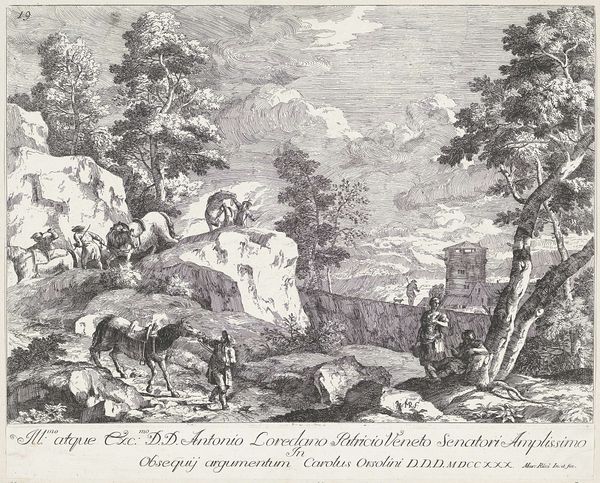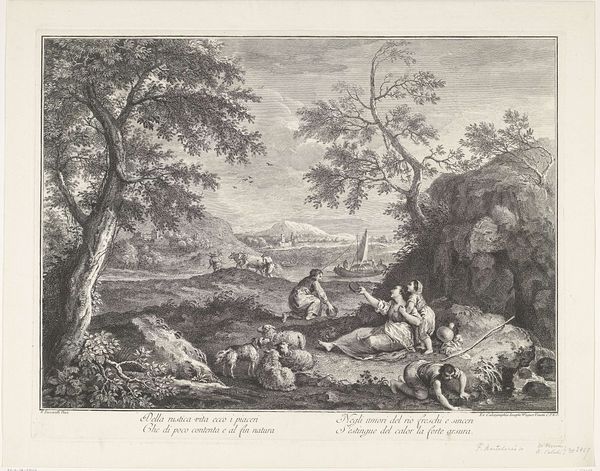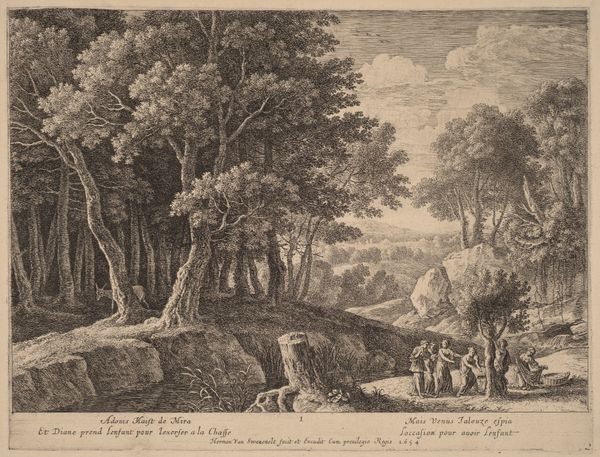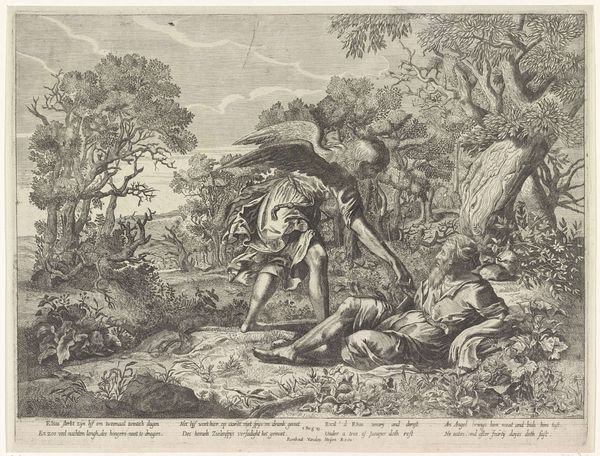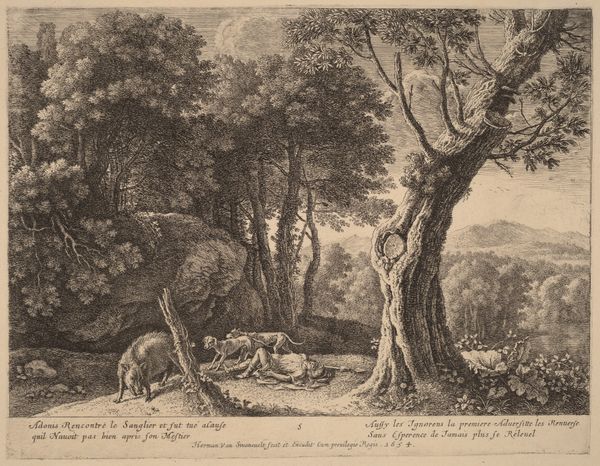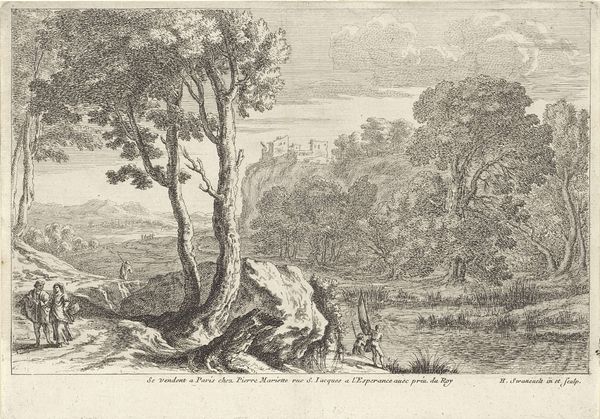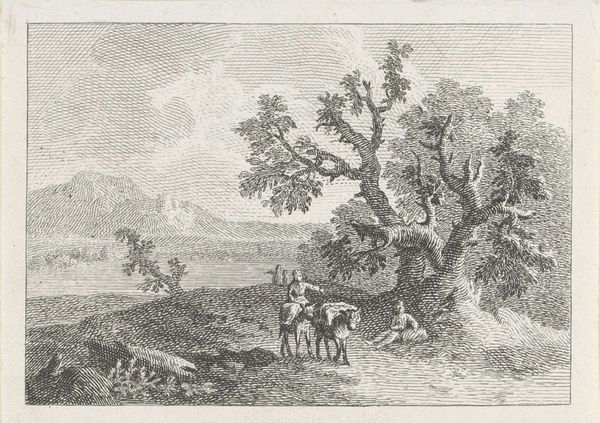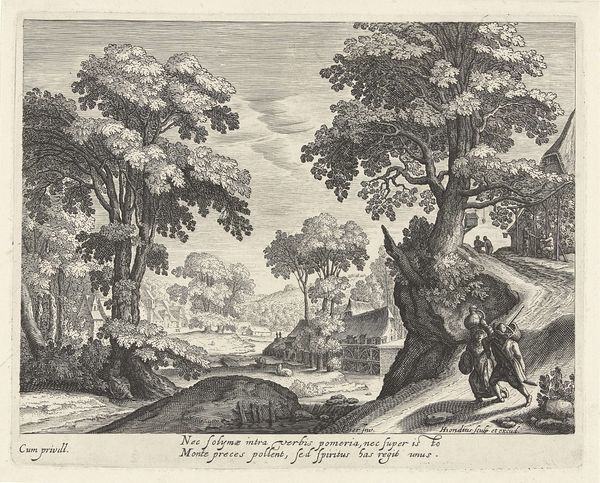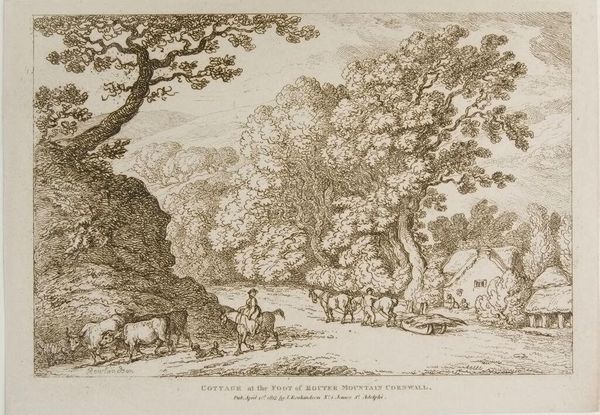
aquatint, print, etching
#
aquatint
#
neoclacissism
# print
#
etching
#
landscape
#
genre-painting
#
history-painting
Dimensions: height 200 mm, width 304 mm
Copyright: Rijks Museum: Open Domain
Curator: This aquatint etching, dating from 1789 to 1793, is entitled "Herderin in een landschap," or "Shepherdess in a Landscape." Hendrik Meijer both drew and etched it, while T. Sheldrake completed the engraving. It's interesting to note it’s presented as part of a larger set of landscape drawing designs. Editor: There's a wistful air to this work, don't you think? The delicate shading, almost monochrome palette, gives it an ethereal, dreamlike quality. The figure of the shepherdess herself seems isolated within this somewhat rugged scene. Curator: Yes, and within the framework of late 18th-century aesthetics, this piece negotiates some intriguing ideological tensions. Here we see not simply a landscape, but the construction of a "natural" world infused with neoclassical ideals. Editor: Tell me more about that tension you’re seeing. Curator: Well, Neoclassicism at this time was often used to justify and idealize particular societal structures. This print presents a harmonious vision, but whose harmony is represented, and at what cost? The figure’s quiet presence alongside livestock invites us to reflect on the role of labor and nature within established hierarchies, and to the pastoral ideal’s complex history. Editor: I see what you mean. On the one hand, the title itself presents a female subject in a rural setting, invoking a kind of romanticized simplicity. But that ideal glosses over what would surely have been an exploitative reality. Were the conditions and contributions of actual herders recognized or respected? And what gendered dimensions of power are being re-inscribed here? Curator: Precisely! This isn't simply an idyllic scene, but a constructed image meant to impart very specific aesthetic values—a sense of order, harmony, and control over the landscape that serves a certain ruling-class fantasy. Meijer and Sheldrake's composition, in turn, reinforces those views in its framing of social relations. Editor: So by dissecting the socio-historical forces shaping not only the work but its immediate context as well, we start to uncover its more insidious functions. Curator: Exactly, that helps us approach it with critical awareness, understanding the nuanced layers beneath the seemingly serene surface. Editor: Indeed, it highlights how even seemingly innocuous images of the natural world can be implicated in broader systems of power and representation.
Comments
No comments
Be the first to comment and join the conversation on the ultimate creative platform.
